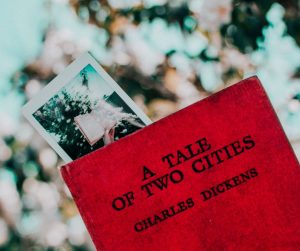Many people consider writing an art form. Then again, you would likely have no trouble finding a bunch of folks (especially students) who think of it more as the bane of their existence. No matter how an individual might personally feel about writing, almost everyone would agree that it serves many purposes in life.
Writing can be a means to earn income, but it can also be therapeutic. Writing is a teaching tool. It’s also a great way to tap into creative thinking without having to meet a deadline or fulfill an assigned task. If you’re one of the world’s budding new authors, we welcome you! We also offer a word of caution. Many new writers make the same mistakes. If you read this post to the end, you will hopefully learn to be aware of them and avoid them like the plague.
New writer mistake number one
One of the most common mistakes that many new writers make is to present readers with a weak introduction. Imagine yourself strolling along the streets of New York City. You’re window shopping. At some point, you decide to enter a shop. Why? Something you saw or felt within the first few moments of passing by made you want to go inside and see more.
Think of the introduction of your story like the window of your shop. Readers have to like what they see if the goal is to get them to keep reading. Your intro also has to pique curiosity. It should give a glimpse of what’s to come, without giving away too much information—just enough to make them not want to put the book down. On the other hand, a weak introduction will cause readers to quickly lose interest. In fact, they might never get passed the first paragraph!
Also avoid weak plots
The second mistake that befalls many a new writer is failing to build a strong plot. A story’s plot has to be more than just a bunch of stuff happening. Yes, when you were a child, your English teacher probably assigned you the task of writing a ”first, next, then, finally” paragraph. It is a helpful exercise to learn how to write cohesively.
Now that you’re ready to write a book, you need to give readers more than that. Every well-written plot follows a similar, systemic path. It has a beginning, a middle, which builds to a climax, then a decline, which leads to an end. The formal terms for this unfolding are: exposition, rising action, climax, falling action and resolution. Just remember that a weak plot results in a boring story.
New writer mistake number three is to tell instead of show
Anyone who has engaged in writing activities over a span of many years can go back and read what they’ve written and see a noticeable progression and improvement of their skills. Most writers have laughed aloud after stumbling across something they wrote when they were just starting out.
A perpetual evolution takes place in every author’s writing journey. One mistake that a more experienced writer knows how to avoid is telling readers things instead of ”showing” them. If you want to avoid this mistake, think of your story as an experience for your readers. Don’t just tell them that there was an old tree in the middle of a field. ”Show” them the tree by using personification or other writing tools that bring the scene to life.
Find mentors to help you refine your writing skills
Most writers have their own favorite authors. You can learn a lot about writing by carefully analyzing their work. Whose books do you enjoy most, and why? To apply the lessons imparted in this blog post, page through a story by one of your favorite authors and notice how he or she avoids these common new writer mistakes. Never be hesitant to reach out for guidance when you are taking your first steps into the world of professional writing.









